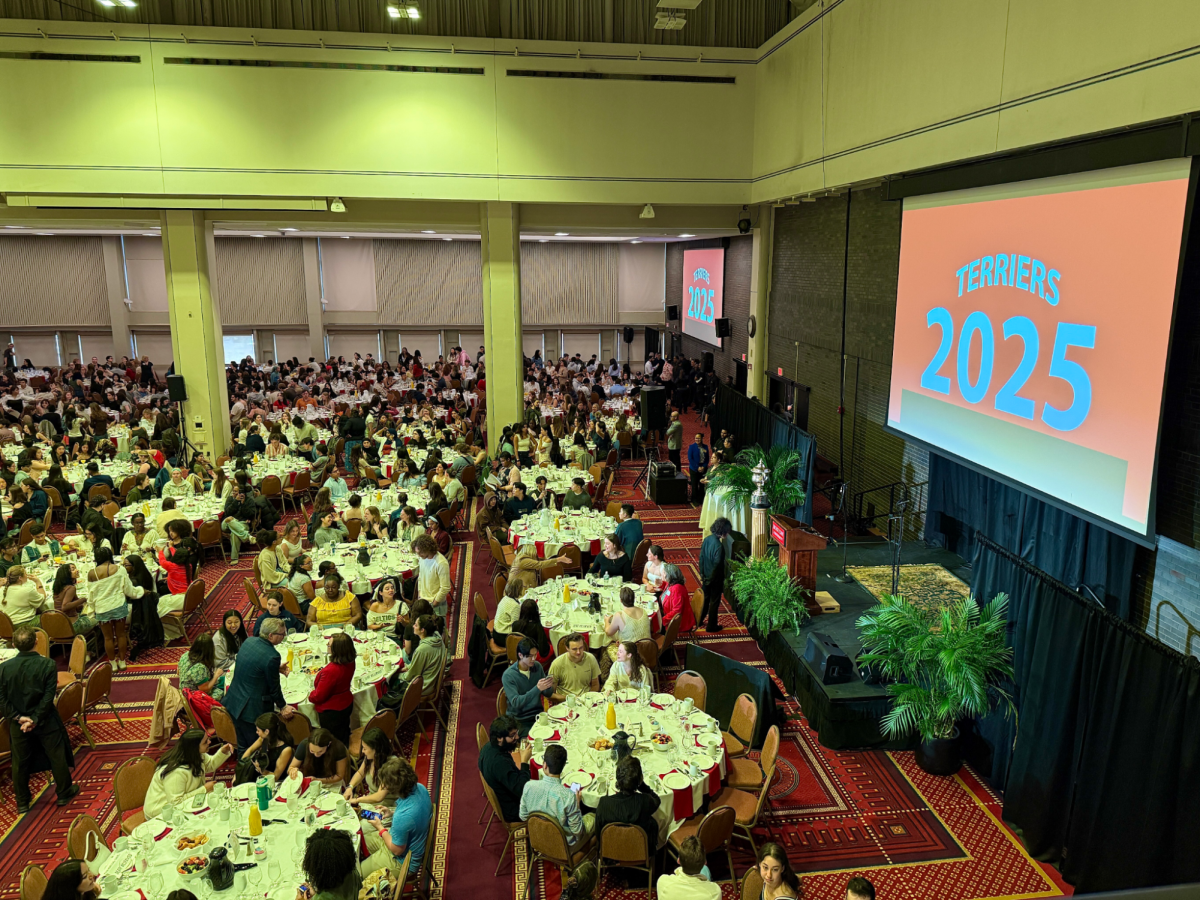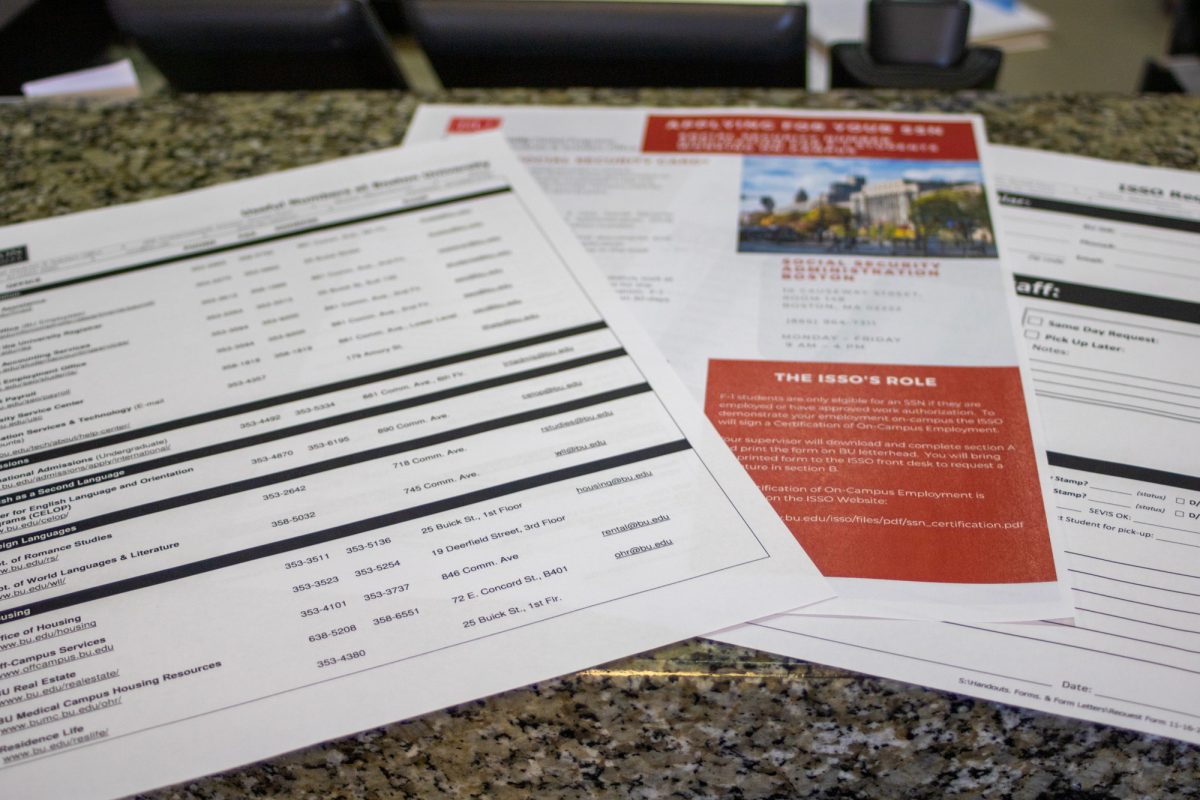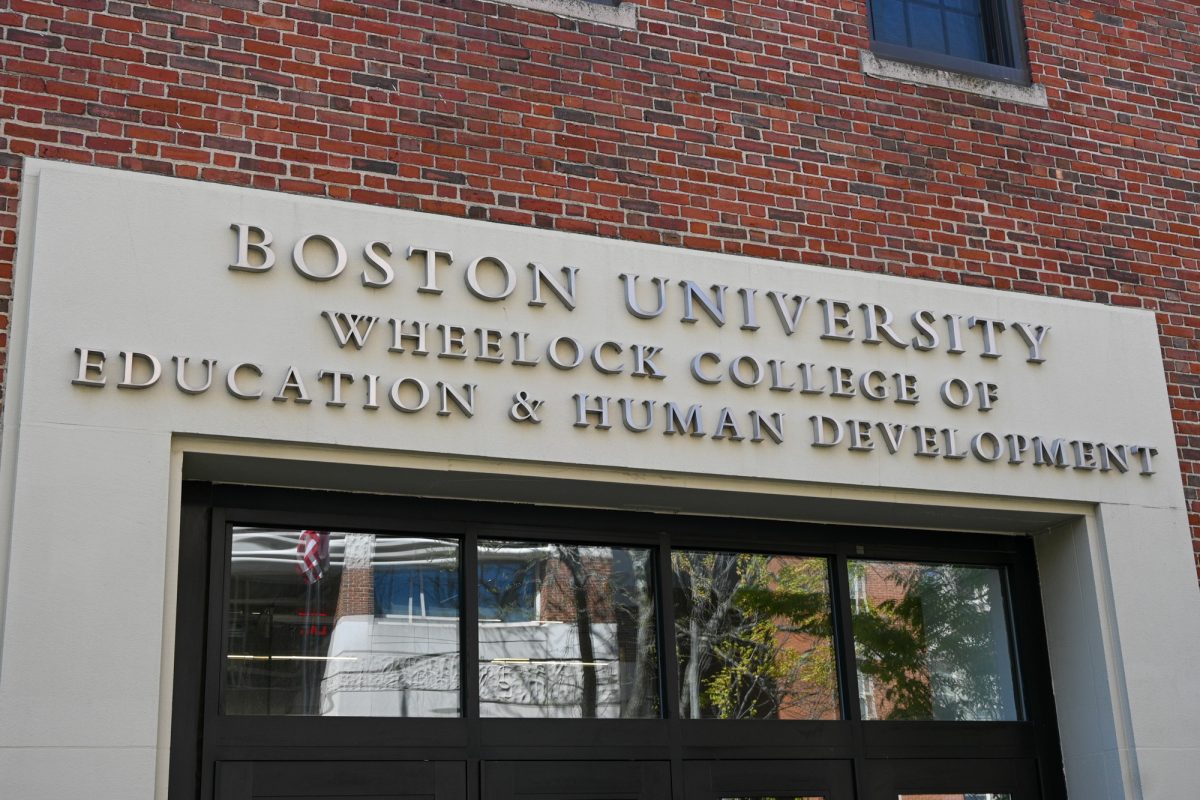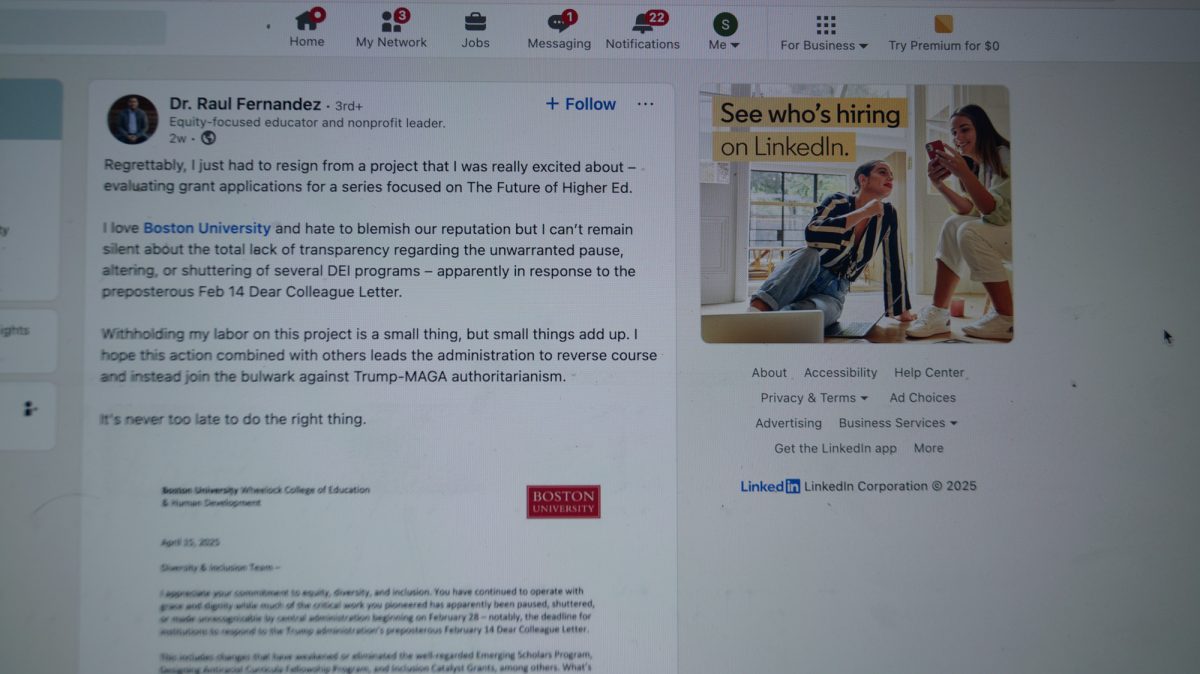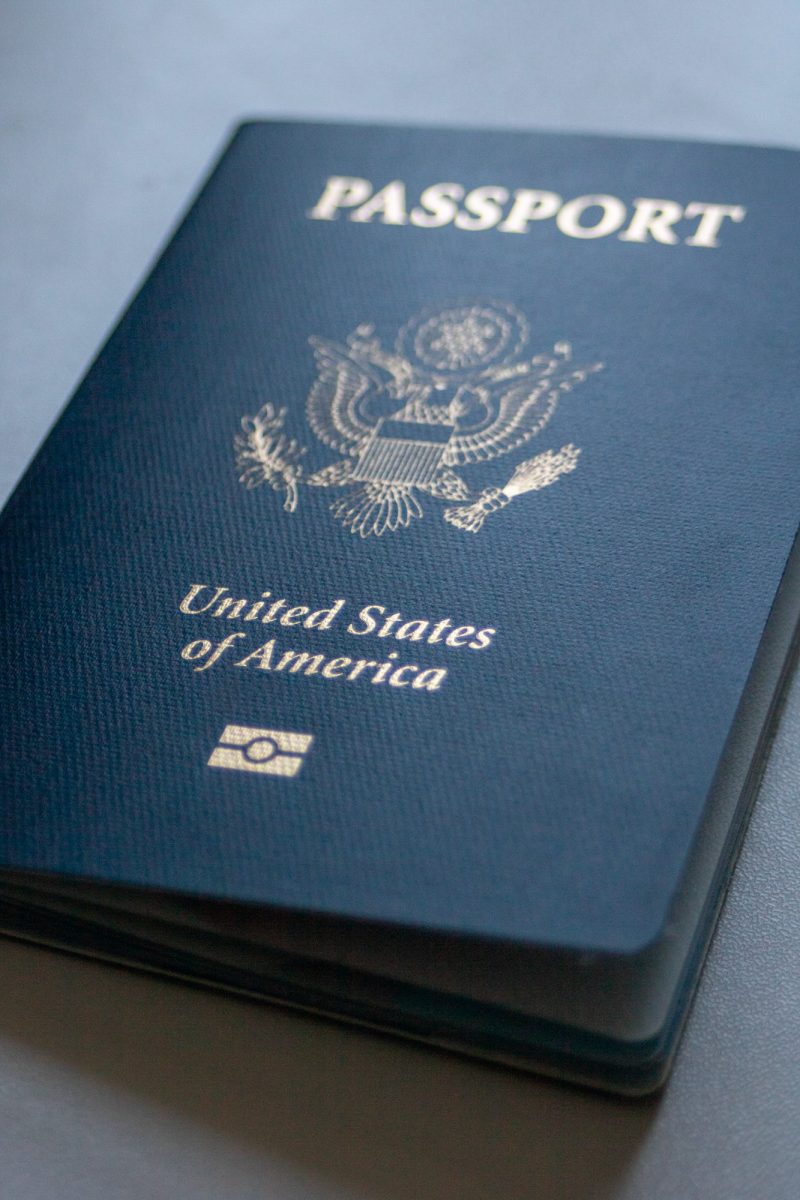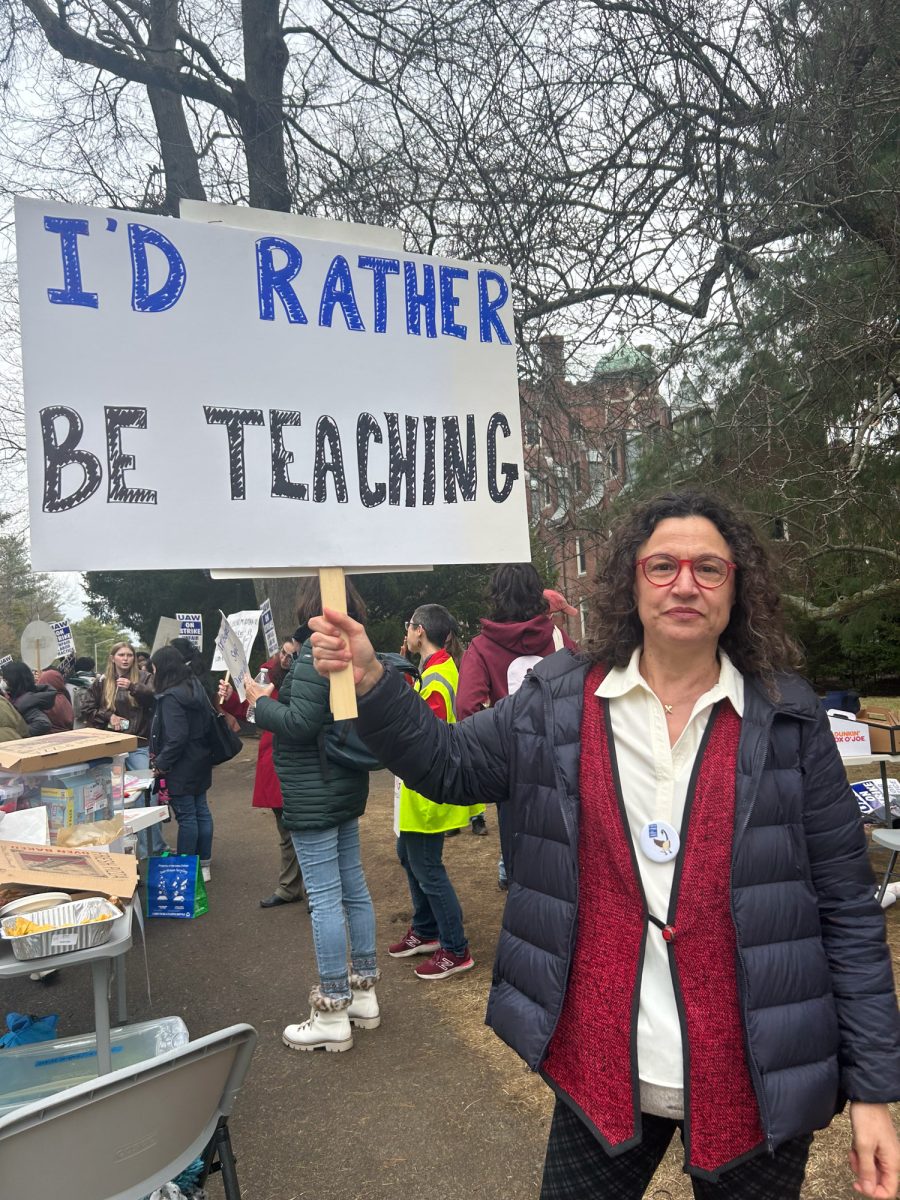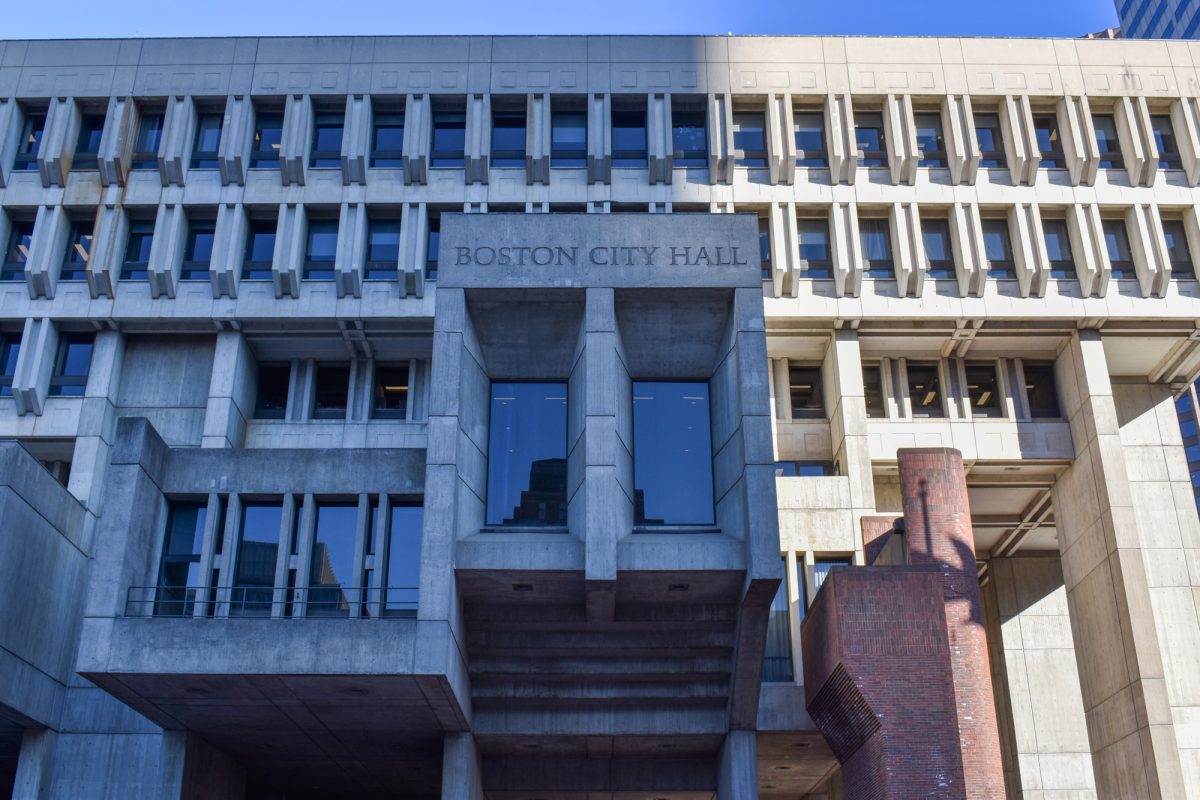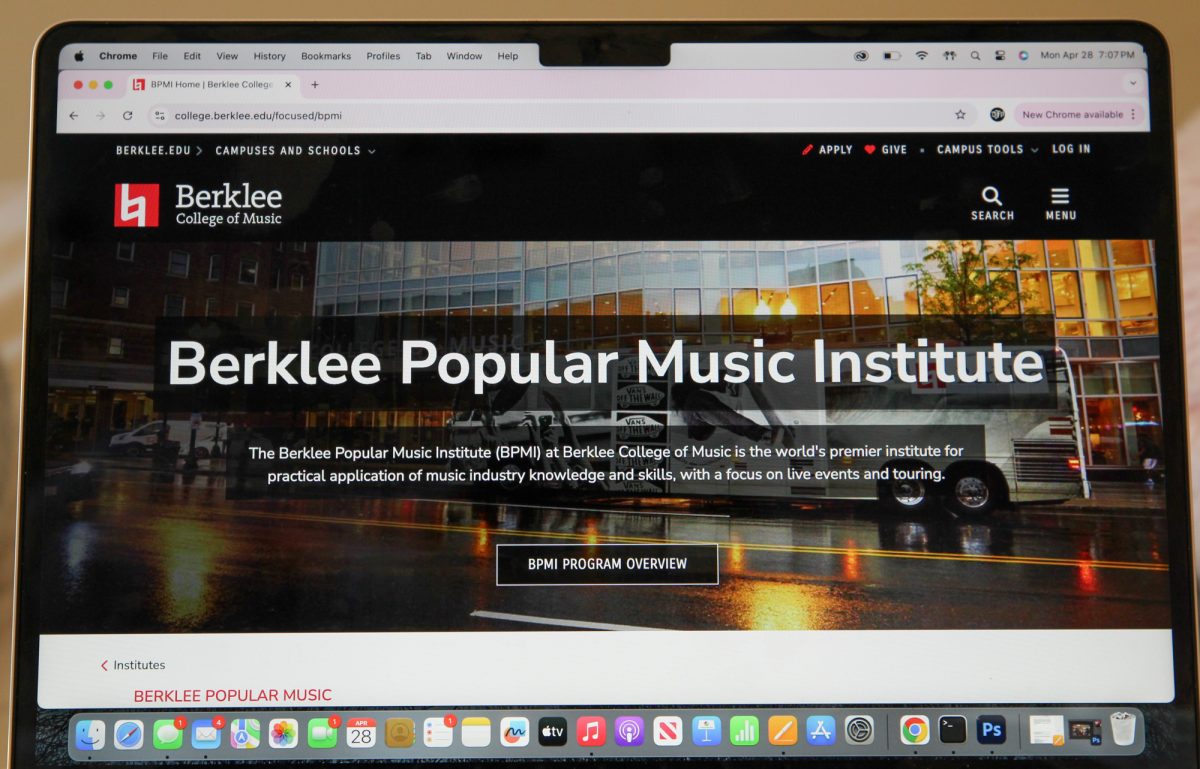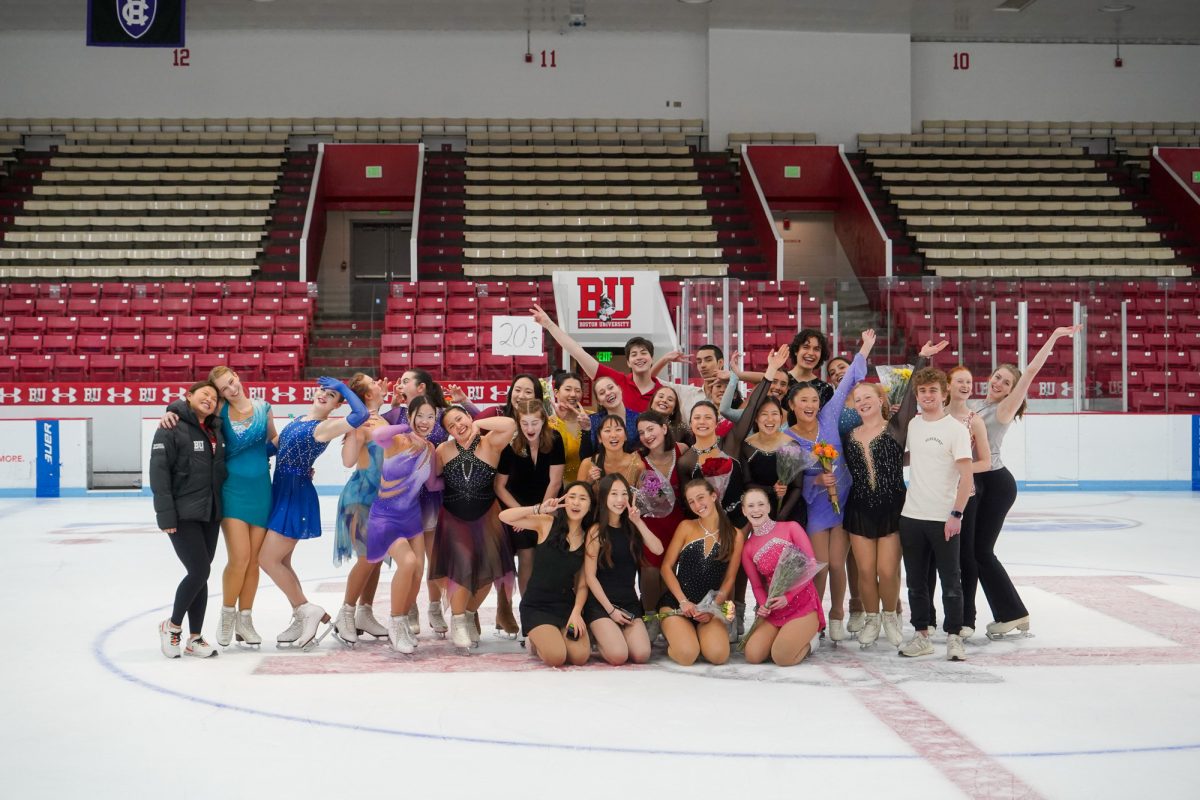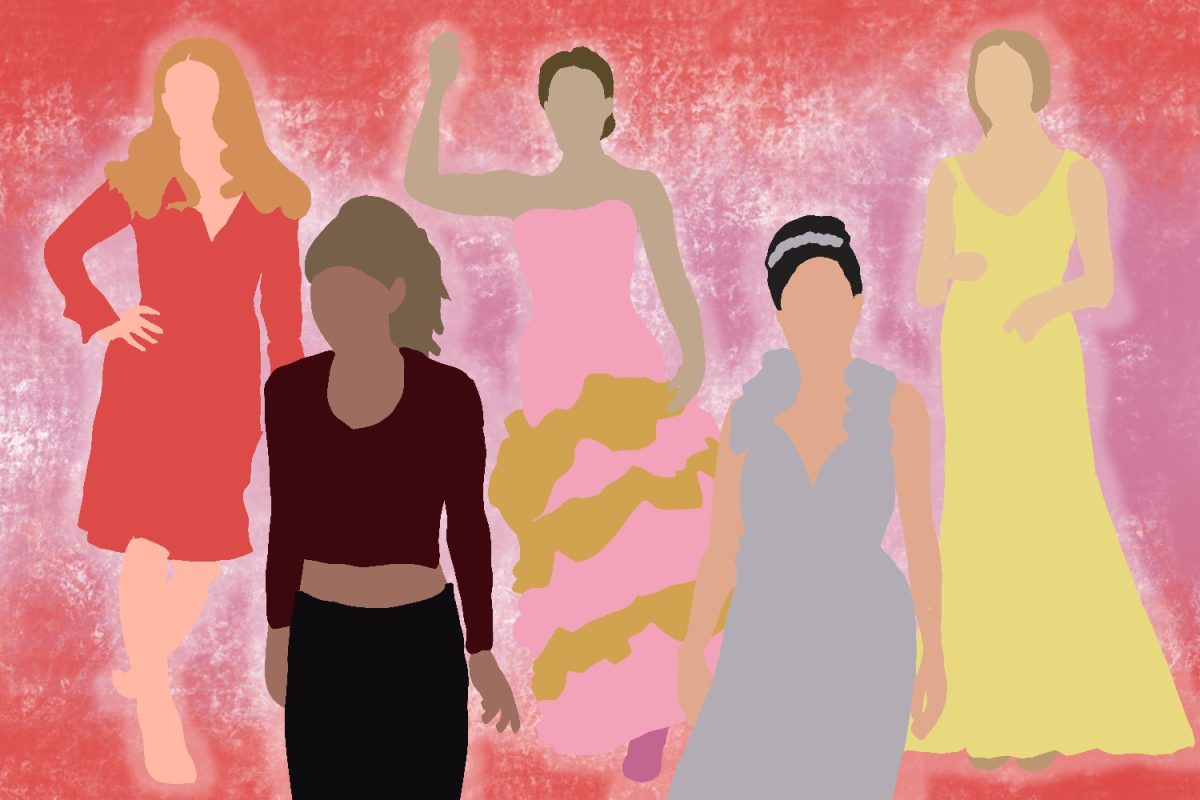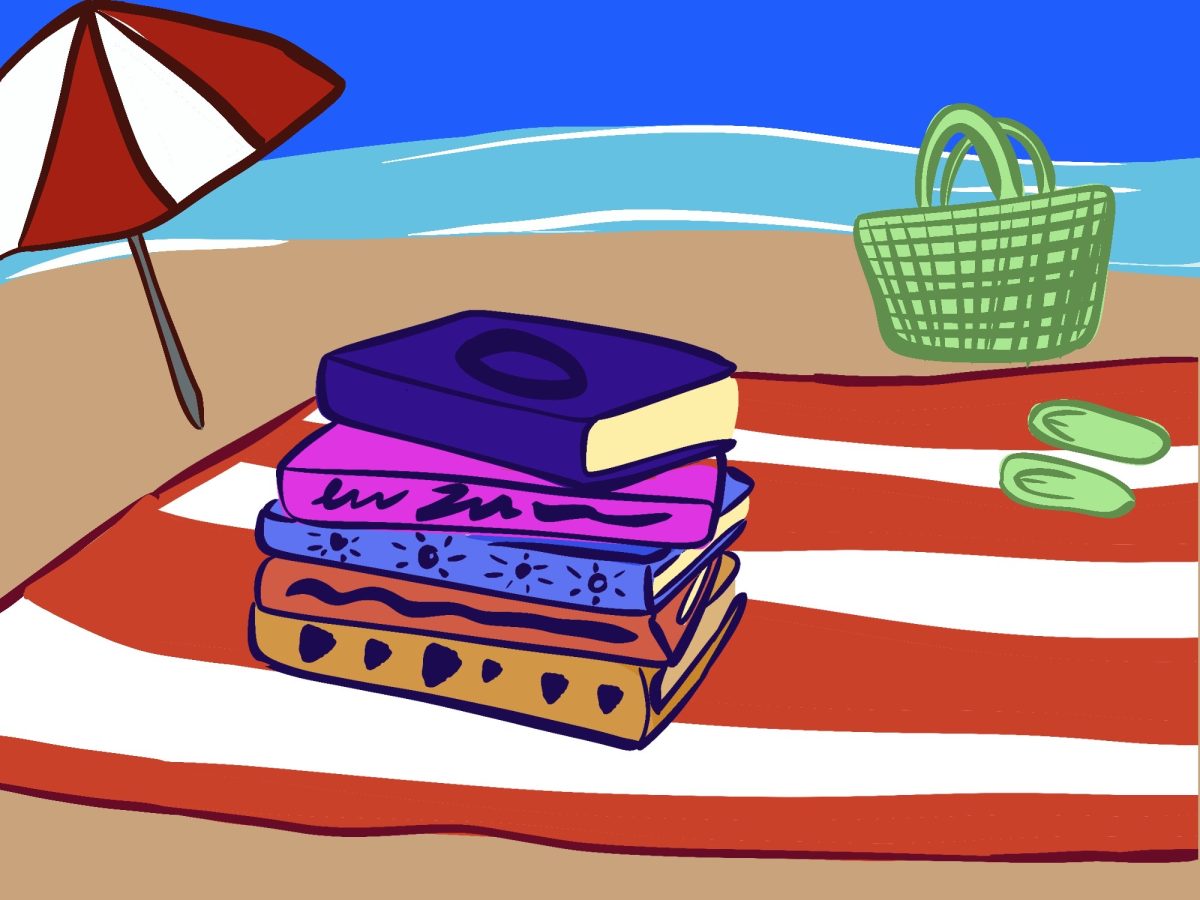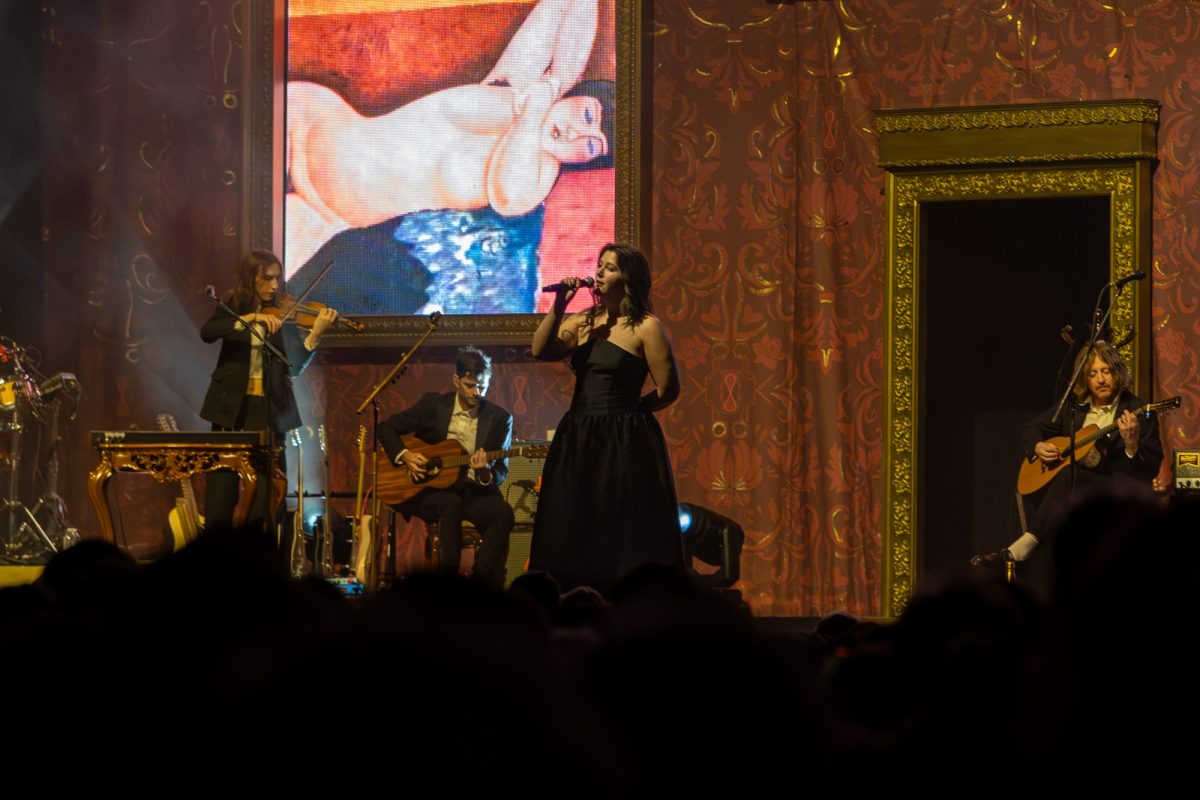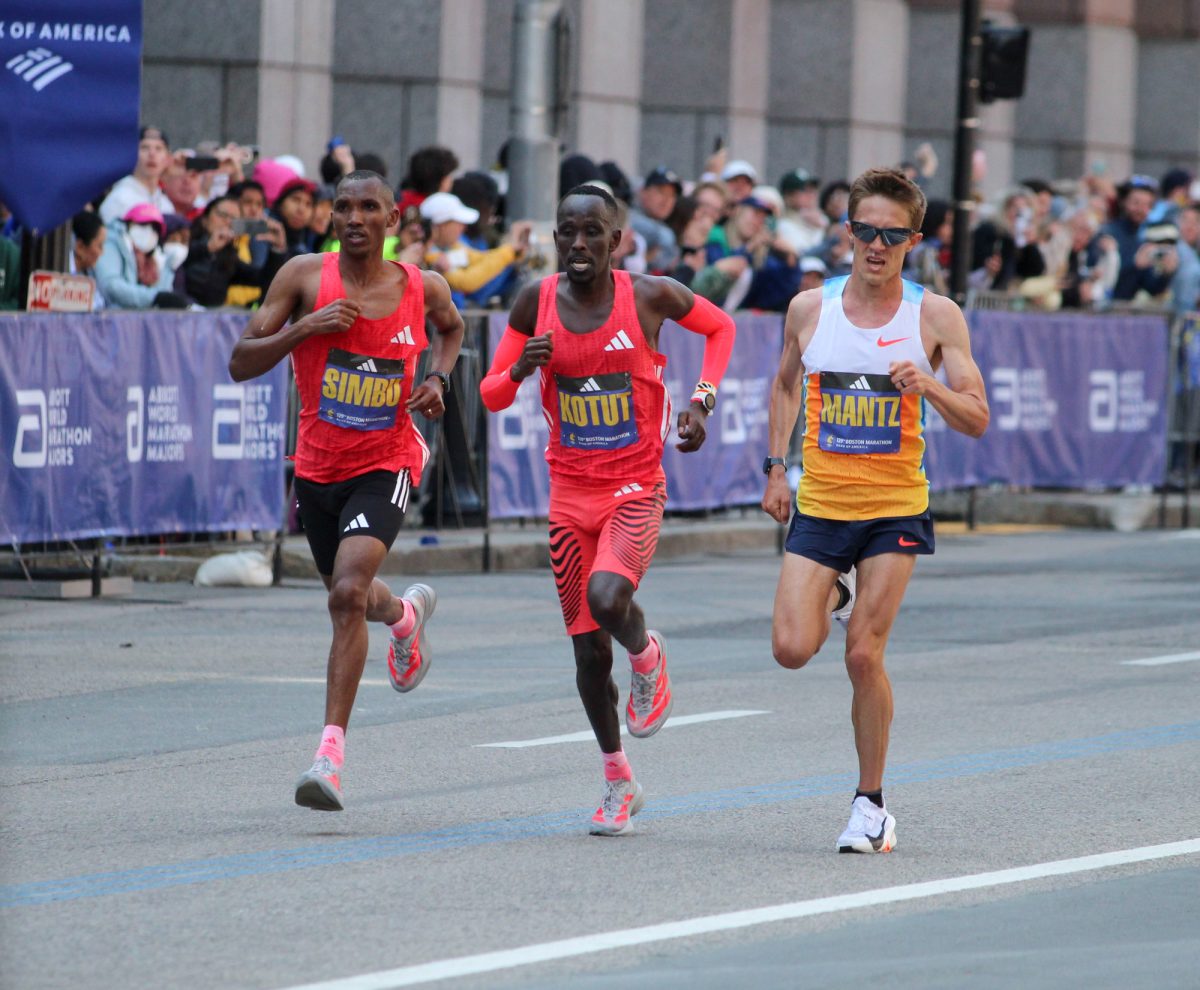Where jazz musicians, comedians and burlesque dancers once offered Bostonians wholesome — and less than wholesome — fun, now stands City Hall, surrounded by a desolate, gray plaza. Government Center once went by another name and drew a crowd beside bureaucrats.
The last remains of Scollay Square include the Sears Crescent building, once at the corner of Court and Cornhill streets; the edifice is now flanked by the Government Center T station, replacing the old streets where a neighborhood pulsed like the bright lights illuminating the theaters and bars.
The blocks that were razed for the construction of City Hall included an assortment of streets, alleys and lesser-known squares than Scollay — whence the neighborhood derived its name.
Today’s scene contrasts sharply with the animated atmosphere of old Scollay Square, historian David Kruh says.
“The place was alive,” Kruh explained. “What can I say? You could go in as deep as you wanted to. You could go buy a hot dog from Joe and Nemo’s or you could go to the burlesque shows . . . see the burlesque comics.”
AN HISTORIAN’S PASSION
Scollay Square’s energy captivated Kruh and motivated him to study the neighborhood’s history, he said. He dug into its past and discovered legendary personalities from colonial times up to the first half-half of the 20th century.
Forward-thinking scientists, like Dr. Zabdiel Boylston, pioneered New World smallpox inoculation in Scollay Square during an eighteenth century epidemic. The building where William Lloyd Garrison published the abolitionist newspaper The Liberator was demolished to make way for City Hall.
President-assassin John Wilkes Booth appeared in some of his first plays in the square’s theatres. Thomas Edison, Alexander Graham Bell and Samuel Morse made workshops in the square.
“I loved the dichotomy going on,” Kruh said, describing the curious pairing of America’s top scientists with burlesque shows and nightclubs. “That’s what a city is. It puts people in a tight space and says, ‘Go at it.'”
Kruh said that when he started writing his book, Always Something Doing: Boston’s Infamous Scollay Square, he found that people who remembered the days of burlesque, tattoo parlors and popular comedians performing at venues like the Old Howard Theater and the Crawford House were more than willing to offer their accounts of downtown Boston’s heyday.
“People love to talk about the hot dogs, the shows and even the tattoos,” he said. “People of that age miss it, not only the places themselves but what they represented.
“There’s an old story that says a father once told his son, ‘Don’t go to the Old Howard because you might see something you’re not supposed to see,'” Kruh continued. “So the son goes and sees his dad sitting in the front row.”
The area — once an integral, and then a divisive, aspect of Boston’s history and development — is often overlooked and even forgotten by historians, tourists and lifelong Bostonians alike, Kruh said. Razed in 1962 as part of widespread urban redevelopment, a mere plaque at Government Center commemorates Scollay Square’s existence.
“I challenge anybody to look at Government Center today and not say the city would be better if we kept some things,” Kruh said. He described City Hall as “the most foreboding, George Orwellian structure you could imagine” and “an affront to the city.”
City Hall now stands in place of entertainment venue, like the Old Howard, a theater originally known as the Howard Athenaeum. Built in the 1840s, Kruh said the building that first served as a church could have been used for marquee events like mayoral inaugurations, presidential debates and stops for concert tours.
Changes needed to be made at Scollay Square as the area began to wear down and shops and shows closed in the late 1950s, Kruh added.
“The city was in cardiac arrest,” he explained. The Government Center revitalization project “supercharged the city, energized people to get excited about Boston.”
But, Kruh said, the change should not have been so drastic.
A DANCER’S DREAMS
The area’s radical transformation shocked those who experienced the boom times of Scollay Square. After leaving Boston for a few years, former burlesque dancer Lillyann Rose said she could not contain her emotions when she returned to the city and walked through Government Center for the first time.
“I came back sometime in the ’60s and walked through where they were building Government Center and I cried, I absolutely cried,” Rose recalled.
Rose said while growing up in Medford, she idolized older Scollay Square burlesque entertainers, including her mother Marge La Mont and mentor Anne Corio, widely regarded as the “Queen of Burlesque.”
She said she still cannot understand why the city would remove every trace of Scollay Square’s legacy.
“How can they destroy their history?” she asked. “They could have restored it . . . kept it as an historical section.”
Rose said she believes Boston’s politicians were to blame for the area’s redevelopment. She said city leaders frowned upon the “sleaze” associated with burlesque dancing, an idea Rose said is a major misconception.
“There was no sleaze,” she said. “It was all talent. Funny men and beautiful women . . . It was all in the tease, we didn’t show anything.
“Scollay Square was not a bad area. It was a Mecca of entertainment,” she continued.
She noted the common association of Scollay Square with the Combat Zone of the mid-1960s to late-1980s — a section of Chinatown where Boston officials relegated the city’s strip clubs, sex shops and pornographic theaters.
“People associate the Combat Zone with burlesque and Scollay Square,” she said. “They are not connected. I used to baby-sit and walk through [what would later be called] the Combat Zone at night when I was ten or eleven years old . . . I was walking with my sister’s husband in the ’60s, and he said, ‘What are you doing walking here? It’s two in the morning; you don’t even walk here at two in the afternoon. This is the Combat Zone.'”
“BURLIES, GIRLIES, BARS AND BUMS”
A 1951 review of the entertainment district, titled “Saturday Night in Scollay Square: Burlies, Girlies, Bars and Bums,” ran in The Harvard Crimson. Local students went out to Scollay Square for the shows and premium 50-cent beers.
“Scollay Square is a quiet place, and seldom does anything really . . . get out of hand,” the critic Stephen O. Saxe wrote. “Most bars are well behaved; nevertheless the proprietor of perhaps the best-behaved tavern in the Square estimates that the law is broken in his place about twenty-five times every night.”
Kruh pointed out the relative safeness and wholesomeness of Scollay Square compared to the seedier Combat Zone.
“Scollay Square was not the Combat Zone,” he said. “Scollay Square was tattoo parlors, burlesque, dentists, bowling alleys, the first Radio Shack . . . The Combat Zone in the’70s was about sex.”
Kruh attributed people’s lack of nostalgia for the Combat Zone to its dangerous-reputation.
“The Combat Zone was created by decree of the city,” he said. “You can’t mandate culture . . . Scollay Square evolved and the Combat Zone was created by law.”
Scratch — the promoter and producer for the Boston Baby Dolls who does not reveal his name to the press — said the Combat Zone was a regression from the entertaining atmosphere of Scollay Square.
“The Combat Zone had taken a step back in the wrong direction,” Scratch said.
The perception of Scollay Square as squalid was a major reason for its eventual demise, he added.
“People think of Scollay Square as Times Square in the ’70s, seedy, full of porno,” he said. “In the early-’60s it was a rundown, poor neighborhood, not overrun with porn . . . theaters and restaurants were just not doing well.”
Like Kruh, he said some action had to be taken, but the area’s renovation was not handled in the right way.
“Something had to be done,” he said. “But nuking it and building a parking lot was not right.”
He said the Boston Baby Dolls try to recapture some of the feel of old Scollay Square burlesque shows and he is often met by older patrons who want to talk about the area following Baby Dolls shows.
Scratch said Scollay Square’s most important asset was how it organized the city’s entertainment in one compact area, in a place unlike anything that exists in Boston today.
“It was a real downtown,” he explained. “Boston doesn’t really have that, there’s no real theater district . . . Boston entertainment is pretty scattered; clubs and theaters are all over the place.”
Scratch said people should look past negative aspects of Scollay Square and unsavory memories of the region’s final years.
“I’m always a proponent of preserving history,” he said. “You have to know where you came from. Know your roots. Boston did a disservice by bulldozing its roots.”

